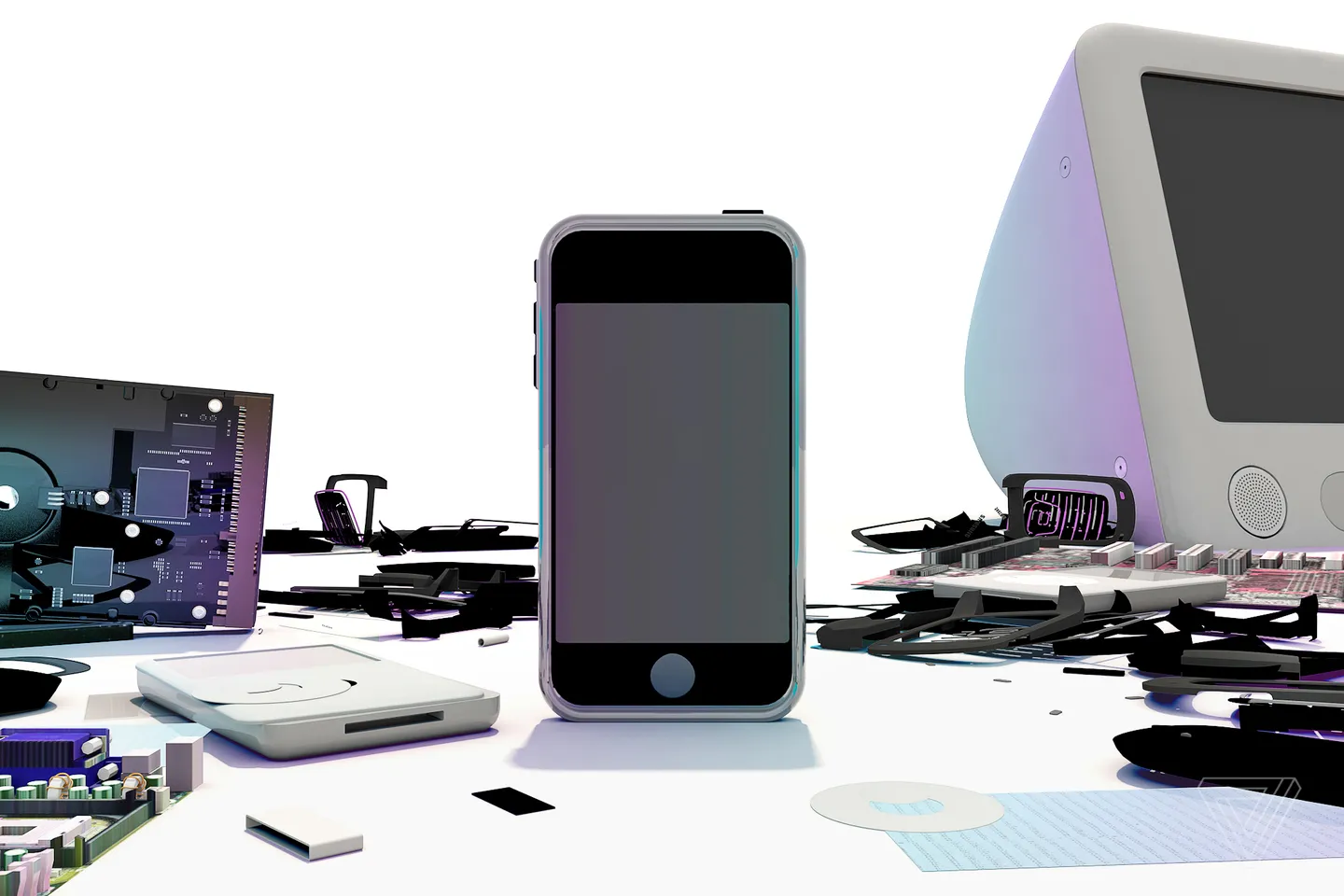iPhone Timeline
Rewind the clock and rediscover Apple's iconic smartphone journey. Our iPhone timeline showcases every model, from the groundbreaking first release to the sleekest Pro Max. Explore specs, features, design changes, and key milestones - a nostalgic trip for Apple fans and tech enthusiasts alike!
2023, September 12
iPhone 15
The iPhone 15, 15 Plus, 15 Pro, and 15 Pro Max were announced on September 12, 2023. Starting with this group of devices, all models switch to using USB-C as their power connector to comply with European Commission regulations, replacing Apple's proprietary Lightning connector after eleven years of use in previous models. All models feature the Dynamic Island, which debuted with the iPhone 14 Pro (effectively retiring the "notch" display cutout), slightly curved edges, and a frosted glass back. The iPhone 15 Pro and 15 Pro Max also replace the mute switch and stainless-steel edges with the "Action" button and titanium, respectively.

2022, September 7
iPhone 14
The iPhone 14, 14 Plus, 14 Pro, and 14 Pro Max were announced on September 7, 2022. All models introduced satellite phone emergency calling functionality. The iPhone 14 Plus introduced the large 6.7-inch screen size, first seen on the iPhone 12 Pro Max, into a lower-cost device. The iPhone 14 Pro and 14 Pro Max additionally introduced a higher-resolution 48-megapixel main camera, the first increase in megapixel count since the iPhone 6s; it also introduced always-on display technology to the lock screen, and an interactive status bar interface integrated in a redesigned screen cutout, entitled "Dynamic Island".
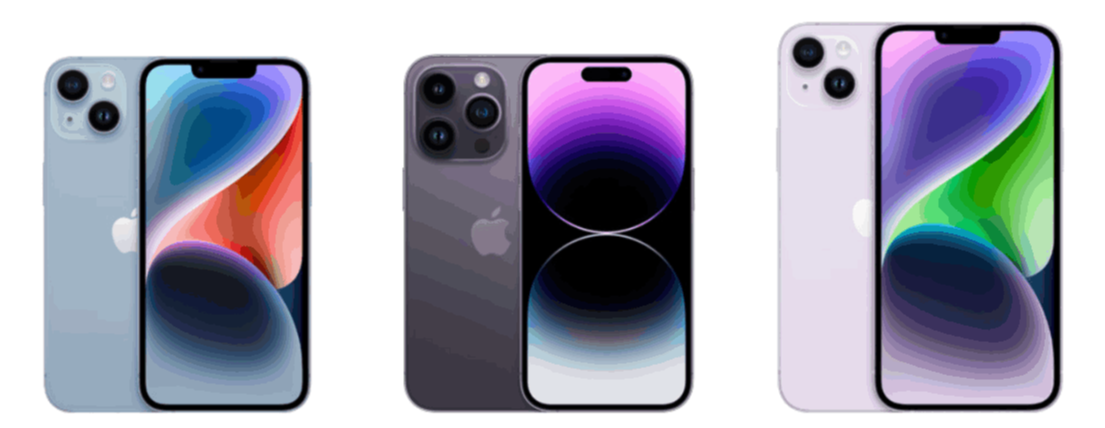
2022, March 8
iPhone SE
The low-cost third-generation iPhone SE was introduced on March 8, 2022, and incorporated the A15 Bionic chip from the iPhone 13, but otherwise retained similar hardware to the second-generation iPhone SE.
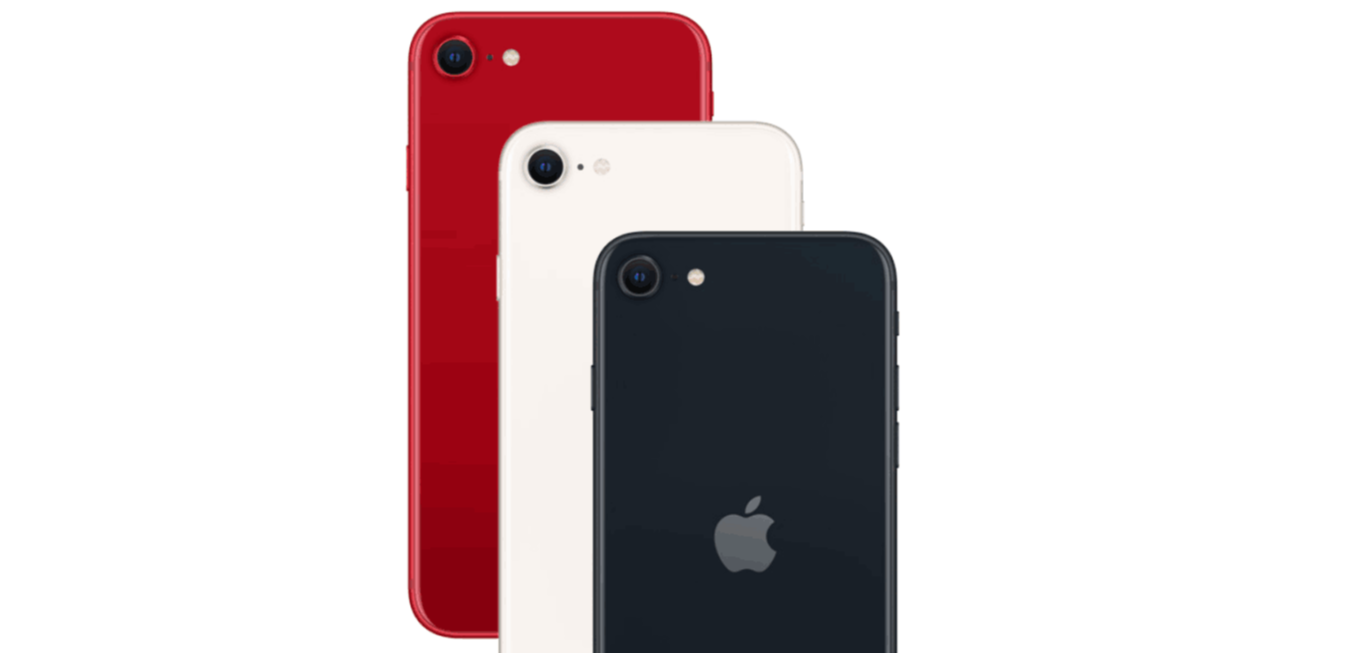
2021, September 14
iPhone 13
The iPhone 13, 13 Mini, 13 Pro, and 13 Pro Max were announced via a livestream event on September 14, 2021. All models featured larger camera sensors, larger batteries for longer battery life, and a narrower "notch" screen cutout. The iPhone 13 Pro and 13 Pro Max additionally introduced smoother adaptive 120 Hz refresh rate "ProMotion" technology in its OLED display, and three-times optical zoom in the telephoto lens.
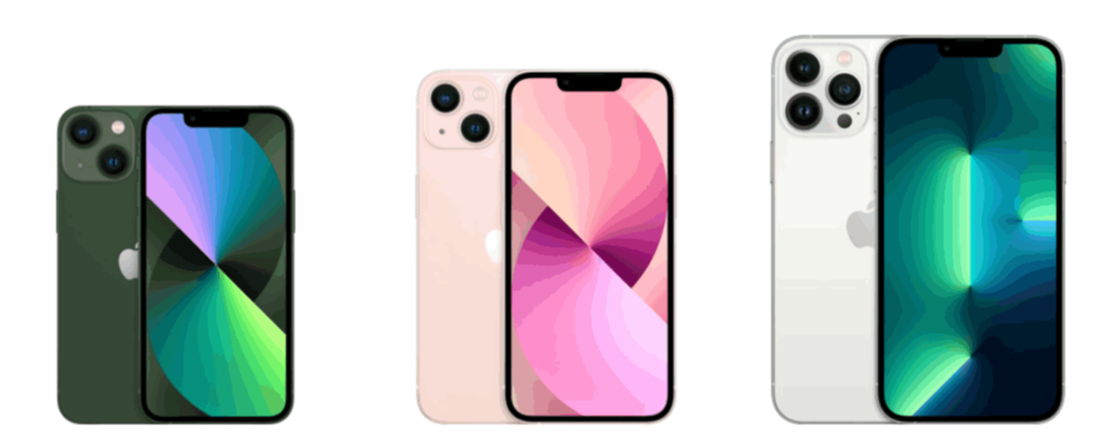
2020, October 13
iPhone 12
The iPhone 12, 12 Mini, 12 Pro, and 12 Pro Max were announced via a livestream event on October 13, 2020. All models featured OLED "Super Retina XDR" displays, introduced faster 5G connectivity, and the MagSafe magnetic charging and accessory system; a slimmer flat-edged design was also introduced, which combined with stronger glass-ceramic front glass, added better drop protection compared to previous iPhones. The iPhone 12 Mini introduced a smaller 5.4-inch screen, while the 12 Pro and 12 Pro Max had larger screens of 6.1-inch and 6.7-inch respectively. The iPhone 12 Pro and 12 Pro Max additionally added a Lidar sensor for better accuracy in augumented reality (AR) applications.
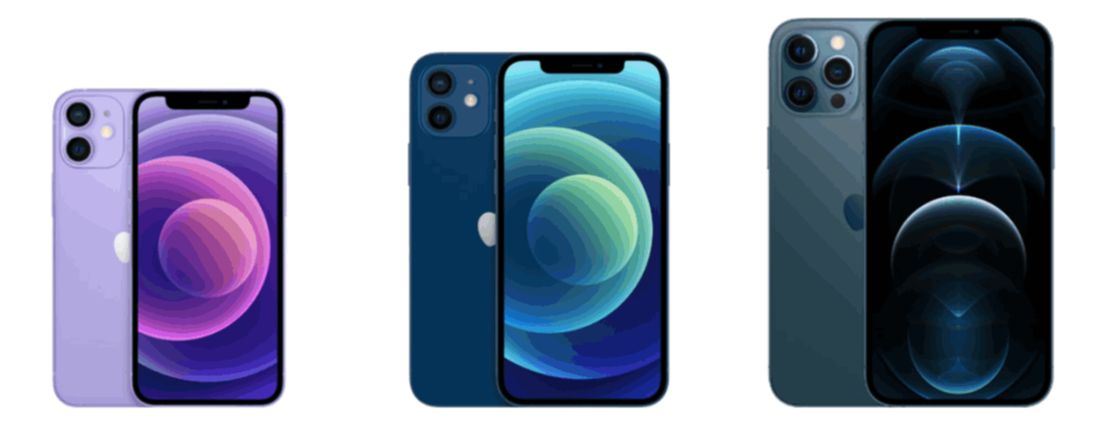
2020, April 17
iPhone SE
The second-generation iPhone SE was introduced on April 17, 2020, and was a low-cost device that incorporated newer hardware from the iPhone 11, in the frame of the older iPhone 8, while retaining the home button and the Touch ID sensor.
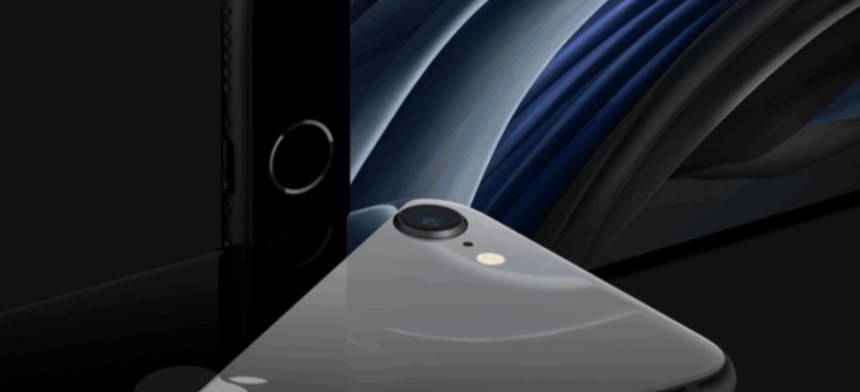
2019, September 10
iPhone 11
The iPhone 11, 11 Pro, and 11 Pro Max were announced on September 10, 2019. The iPhone 11 was the successor to the iPhone XR, while the iPhone 11 Pro and 11 Pro Max succeeded the iPhone XS and XS Max. All models gained an ultra-wide lens, enabling two-times optical zoom out, as well as larger batteries for longer battery life.
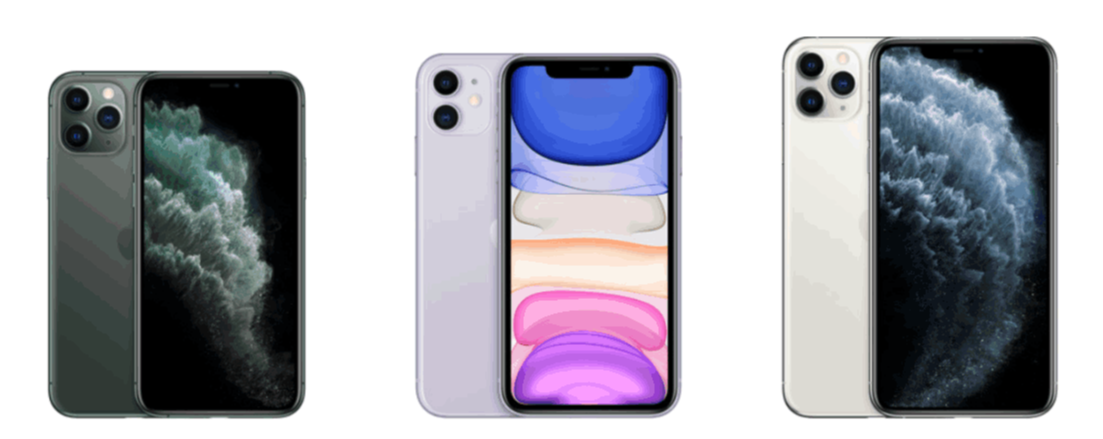
2018, September 12
iPhone XR, XS
The iPhone XR, iPhone XS, and XS Max were announced on September 12, 2018. All models featured the "Smart HDR" computational photography system, and a significantly more powerful "Neural Engine". The XS Max introduced a larger 6.5-inch screen. The iPhone XR included a 6.1-inch LCD "Liquid Retina" display, with a "bezel-less" design similar to the iPhone X, but does not include a second telephoto lens; it was made available in a series of vibrant colors, akin to the iPhone 5c, and was a lower-cost device compared to the iPhone X and XS.
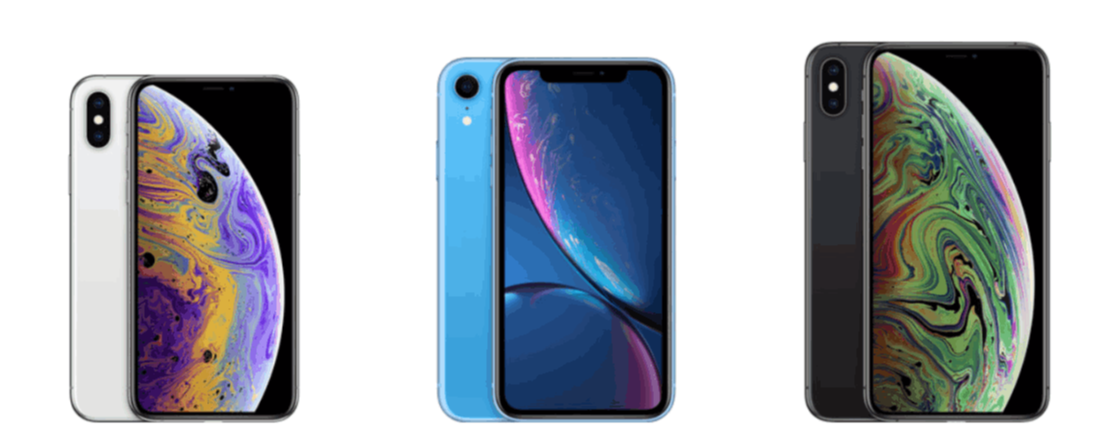
2017, September 12
iPhone 8, X
The iPhone 8, 8 Plus, and iPhone X were announced on September 12, 2017, in Apple's first event held at the Steve Jobs Theater in Apple Park. All models featured rear glass panel designs akin to the iPhone 4, wireless charging, and a hexa-core A11 Bionic chip with "Neural Engine" AI accelerator hardware. The iPhone X additionally introduced a 5.8-inch OLED "Super Retina" display with a "bezel-less" design, with a higher pixel density and contrast ratio than previous iPhones with LCD displays, and introduced a stronger frame made of stainless steel. It also introduced Face ID facial recognition authentication hardware, in a "notch" screen cutout, in place of Touch ID; the home button was removed to achieve the “bezel-less” design, replacing it with a gesture-based navigation system. At its US$999 starting price, the iPhone X was the most expensive iPhone at launch.
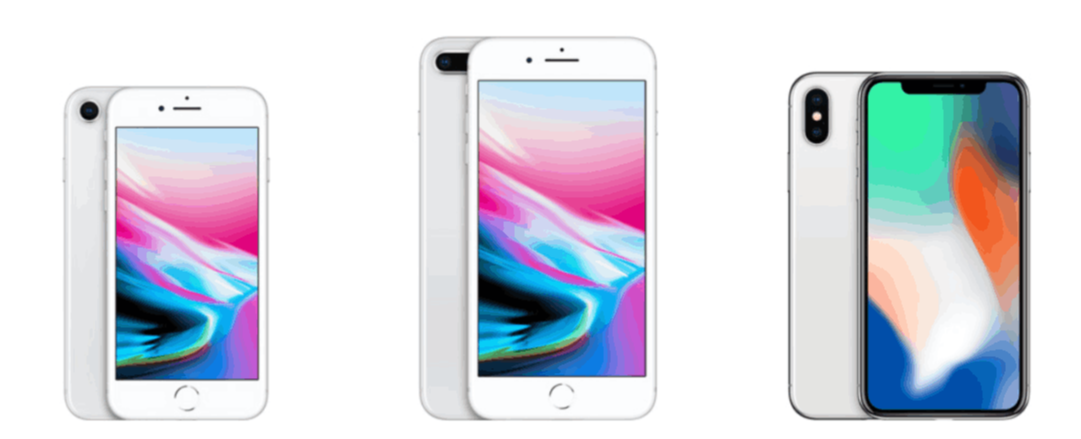
2016, September 7
iPhone 7
The iPhone 7 and 7 Plus were announced on September 7, 2016, which introduced larger camera sensors, IP67-certified water and dust resistance, and a quad-core A10 Fusion processor utilizing big.LITTLE technology; the 3.5 mm headphone jack was removed, and was followed by the introduction of the AirPods wireless earbuds. Optical image stabilization was added to the 7's camera. A second telephoto camera lens was added on the 7 Plus, enabling two-times optical zoom, and "Portrait" photography mode which simulates bokeh in photos.
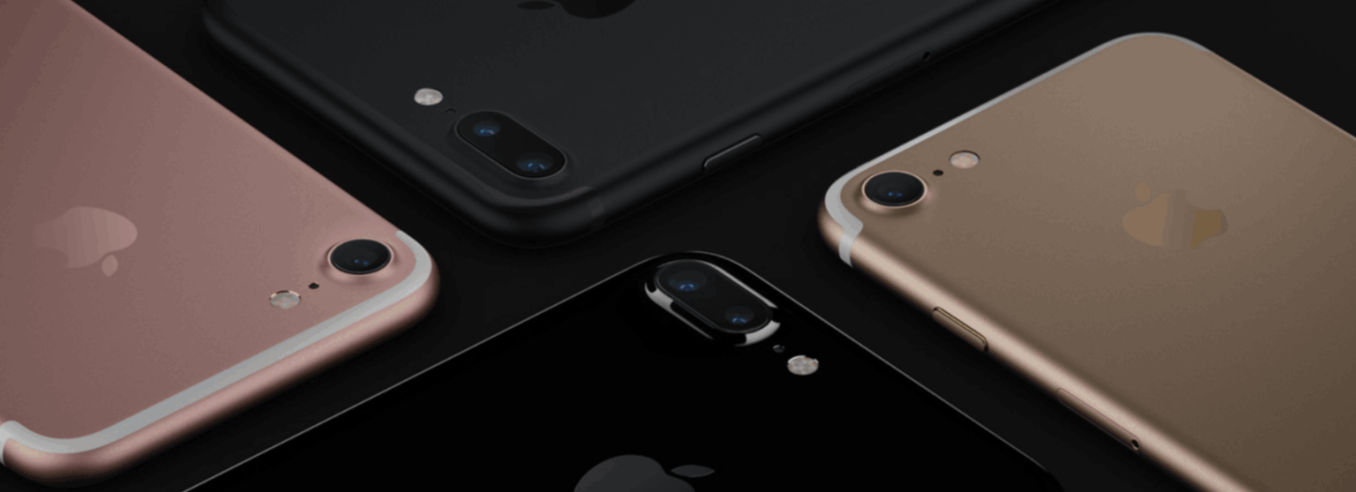
2015, September 9
iPhone 6S, SE
The iPhone 6s and 6s Plus were introduced on September 9, 2015, and included a more bend-resistant frame made of a stronger aluminum alloy, as well as a higher resolution 12 megapixel main camera capable of 4K video recording. The first-generation iPhone SE was introduced on March 21, 2016, and was a low-cost device that incorporated newer hardware from the iPhone 6s, in the frame of the older iPhone 5s.
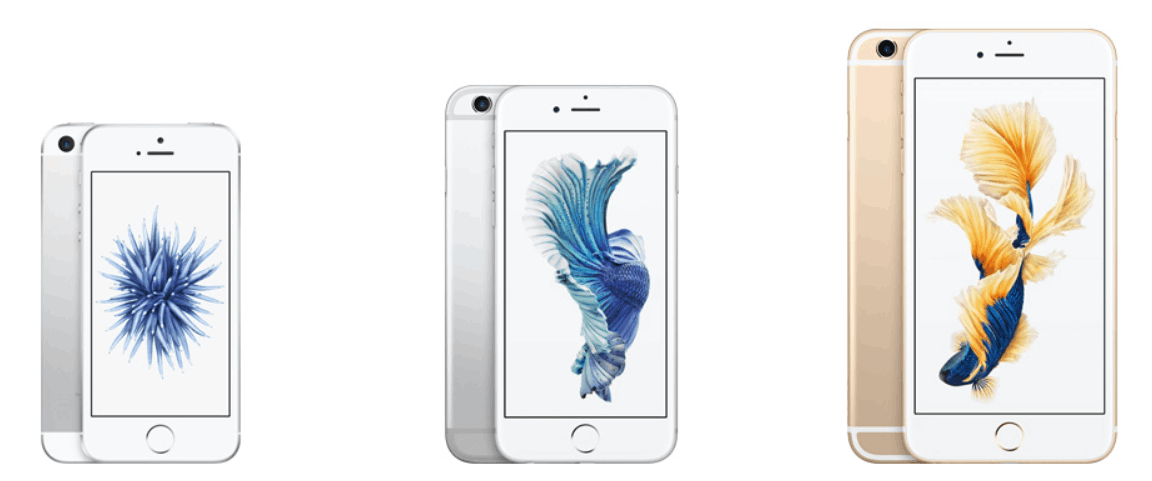
2014, September 9
iPhone 6
On September 9, 2014, Apple introduced the iPhone 6 and iPhone 6 Plus, and included significantly larger screens than the iPhone 5s, at 4.7-inch and 5.5-inch respectively; both models also introduced mobile payment technology via Apple Pay. Optical image stabilization was introduced to the 6 Plus' camera. The Apple Watch was also introduced on the same day, and is a smartwatch that operates in conjunction with a connected iPhone. Some users experienced bending issues from normal use with the iPhone 6 and 6 Plus, particularly on the latter model, and this issue was nicknamed "bendgate".
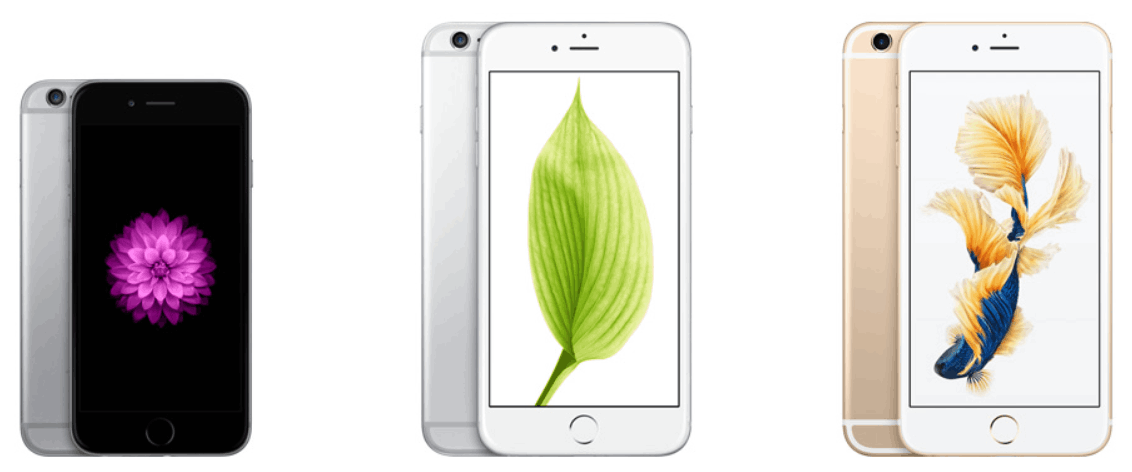
2013, September 10
iPhone 5C, 5S
The iPhone 5s and iPhone 5c were announced on September 10, 2013. The iPhone 5s included a 64-bit A7 processor, becoming the first ever 64-bit smartphone; it also introduced the Touch ID fingerprint authentication sensor. The iPhone 5c was a lower-cost device that incorporated hardware from the iPhone 5, into a series of colorful plastic frames.

2012, September 12
iPhone 5
The iPhone 5 was announced on September 12, 2012, and introduced a larger 4-inch screen, up from the 3.5-inch screen of all previous iPhone models, as well as faster 4G LTE connectivity. It also introduced a thinner and lighter body made of aluminum alloy, and the 30-pin dock connector of previous iPhones was replaced with the new, reversible Lightning connector.
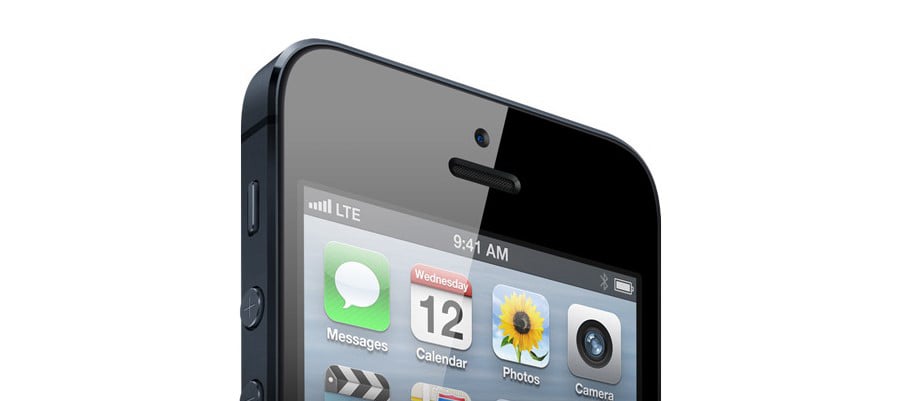
2011, October 4
iPhone 4S
The iPhone 4s was announced on October 4, 2011, and introduced the Siri virtual assistant, a dual-core A5 processor, and an 8 megapixel camera with 1080p video recording functionality.
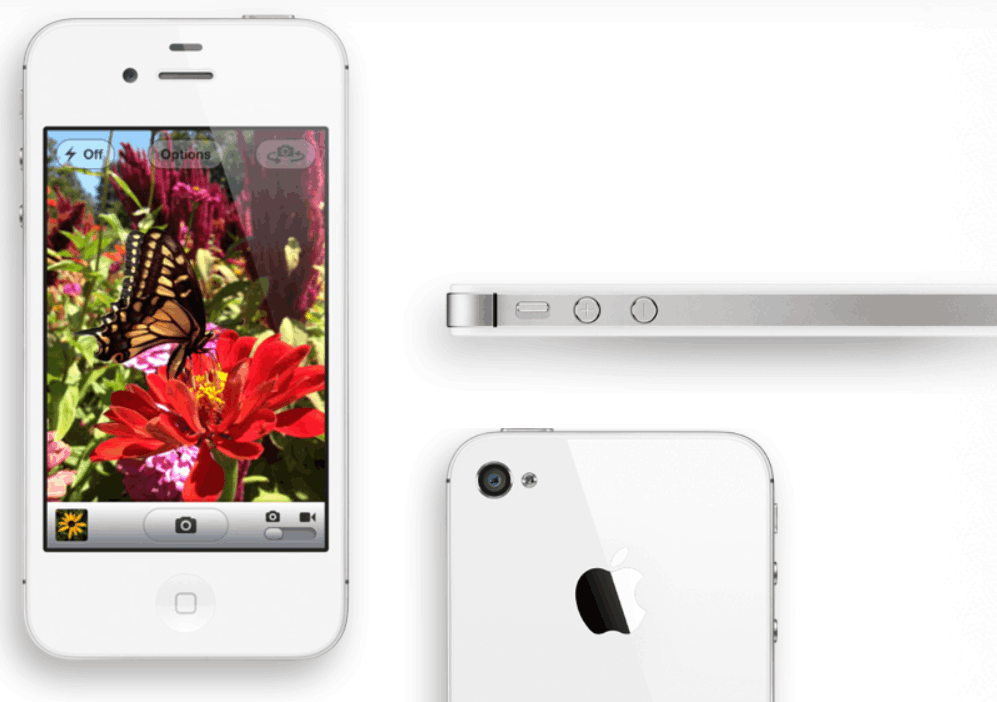
2010, June 7
iPhone 4
The iPhone 4 was announced on June 7, 2010, at WWDC 2010, and introduced a redesigned body incorporating a stainless steel frame and a rear glass panel. At release, the iPhone 4 was marketed as the "world's thinnest smartphone"; it uses the Apple A4 processor, being the first iPhone to use an Apple custom-designed chip. It introduced the Retina display, having four-times the display resolution of preceding iPhones, and was the highest-resolution smartphone screen at release; a front-facing camera was also introduced, enabling video calling functionality via FaceTime.
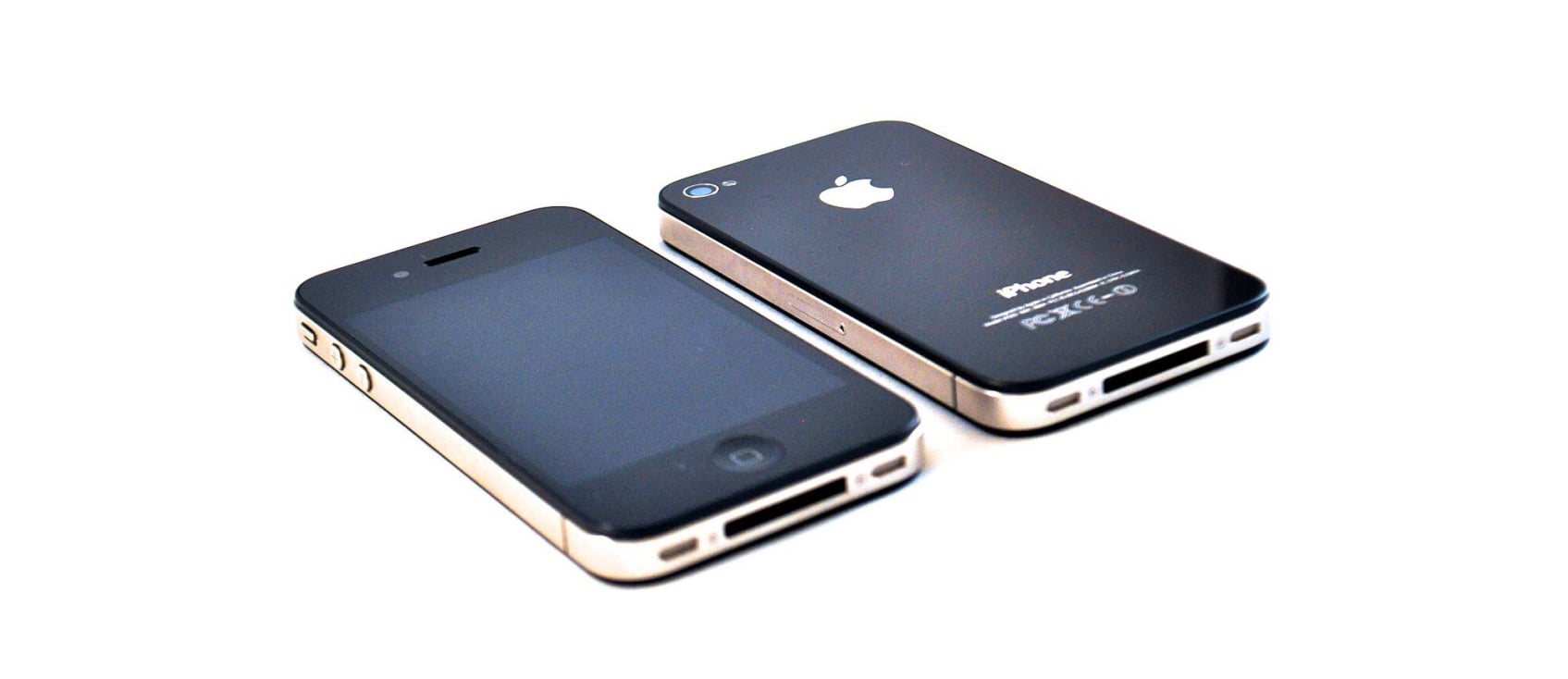
2009, June 8
iPhone 3GS
The iPhone 3GS, was announced on June 8, 2009, at WWDC 2009, and introduced video recording functionality.
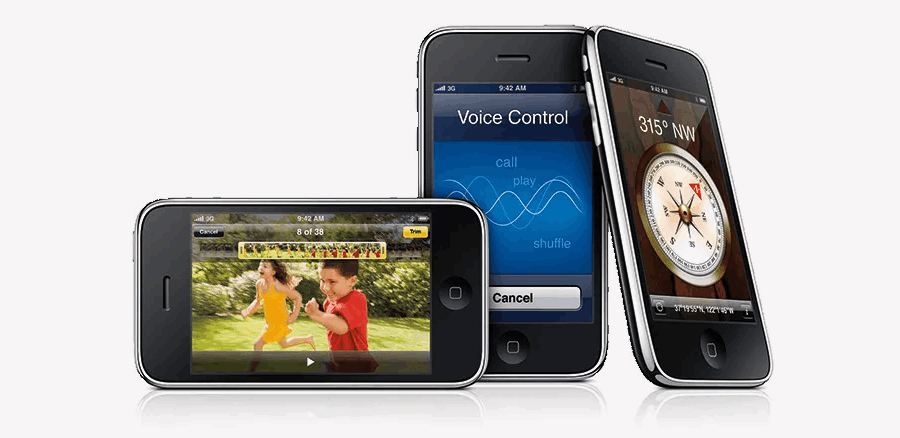
2008, June 11
iPhone 3G
On July 11, 2008, at Apple's Worldwide Developers Conference (WWDC) 2008, Apple announced the iPhone 3G, and expanded its launch-day availability to twenty-two countries, and it was eventually released in 70 countries and territories. The iPhone 3G introduced faster 3G connectivity, and a lower starting price of US$199 (with a two-year AT&T contract). It proved commercially popular, overtaking Motorola RAZR V3 as the best selling cell phone in the US by the end of 2008.
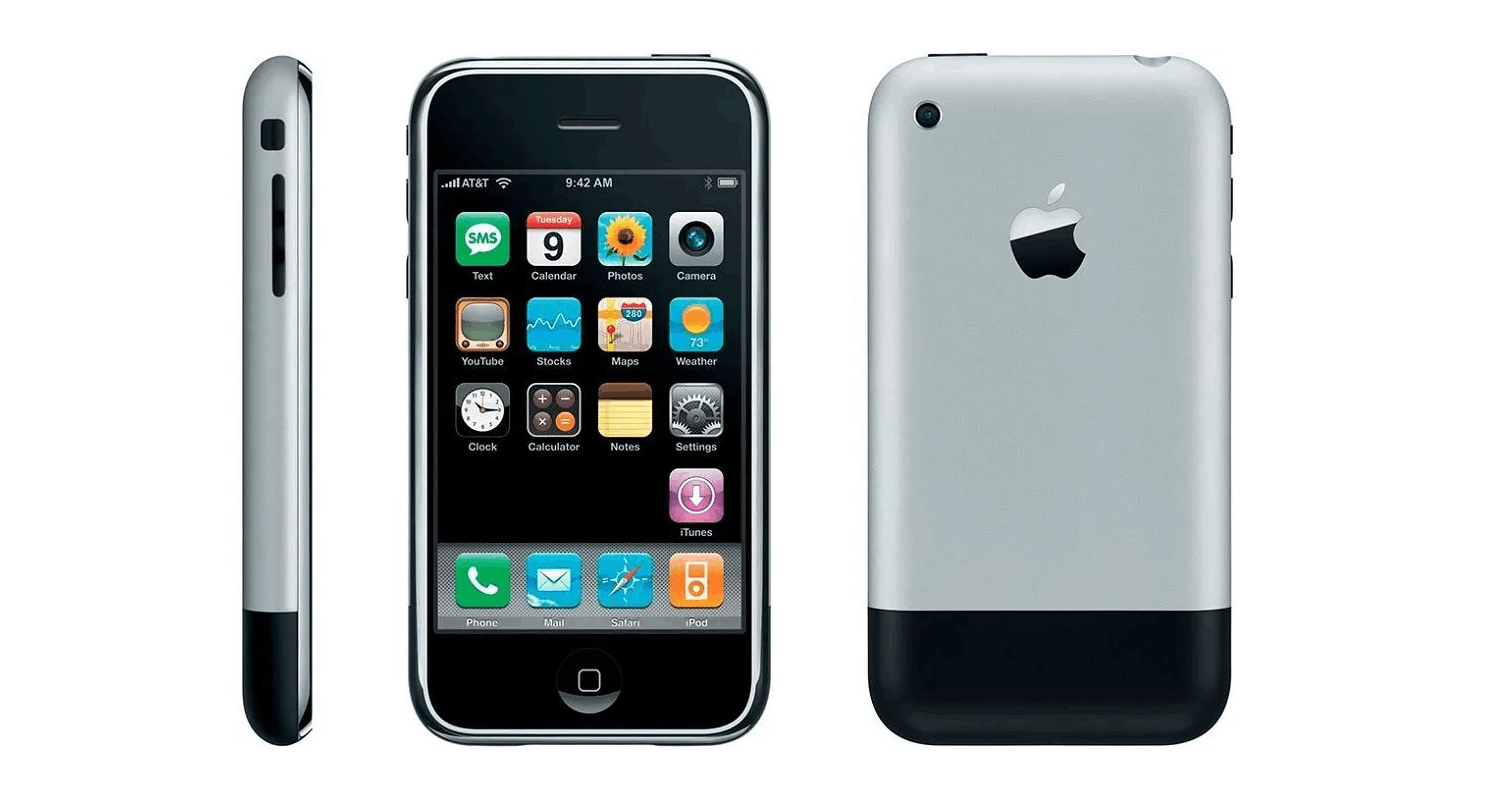
2007, January 9
iPhone
Steve Jobs unveiled the first-generation iPhone to the public on January 9, 2007, at the Macworld 2007 convention at the Moscone Center in San Francisco. The iPhone incorporated a 3.5-inch multi-touch display with few hardware buttons, and ran the iPhone OS operating system with a touch-friendly interface, then marketed as a version of Mac OS X. It launched on June 29, 2007, at a starting price of US$499 in the United States, and required a two-year contract with AT&T.
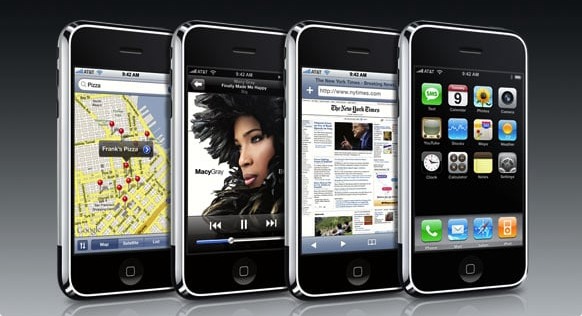
2004
Development
Development of an Apple smartphone began in 2004, when Apple started to gather a team of 1,000 employees led by hardware engineer Tony Fadell, software engineer Scott Forstall, and design officer Jony Ive, to work on the highly confidential "Project Purple".
Then-Apple CEO Steve Jobs steered the original focus away from a tablet (which was later revisited in the form of the iPad) towards a phone. Apple created the device during a secretive collaboration with Cingular Wireless (later renamed AT&T Mobility) at an estimated development cost of US$150 million over thirty months. According to Jobs in 1998, the "i" word in "iMac" (and thereafter "iPod", "iPhone" and "iPad") stands for internet, individual, instruct, inform, and inspire.
Apple rejected the "design by committee" approach that had yielded the Motorola ROKR E1, a largely unsuccessful "iTunes phone" made in collaboration with Motorola. Among other deficiencies, the ROKR E1's firmware limited storage to only 100 iTunes songs to avoid competing with Apple's iPod nano. Cingular gave Apple the liberty to develop the iPhone's hardware and software in-house, a rare practice at the time, and paid Apple a fraction of its monthly service revenue (until the iPhone 3G), in exchange for four years of exclusive U.S. sales, until 2011.
